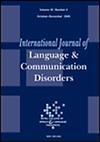Examining Neurodiversity in Bilingual Development Research: Recent Insights Through an Equity, Diversity, and Inclusion Lens
Abstract
Background
As highlighted by research on typically developing children, various biases exist when evaluating bilingual children's abilities. These biases can lead to inequitable assessment of language and cognitive abilities—potentially over- or underestimating bilinguals’ skills. Recent reviews on neurodivergent bilingual children alluded to the possibility that these biases are also present in clinical research.
Aims
This review examines bilingual neurodiversity research in children through the lens of equity, diversity, and inclusion. Specifically, it evaluates potential biases in recent studies to determine whether linguistic and cognitive abilities are assessed equitably, identify the types of linguistic and neurodiverse experiences represented in research, and examine the roles bilingual individuals play in research.
Methods
We conducted an abbreviated systematic review with a multi-pronged search of databases and a manual search for quantitative studies on linguistic and cognitive abilities with bilingual neurodivergent children. The Joanna Briggs Institute Checklist was adapted for risk of bias assessment. Data was extracted and analysed from 95 studies, including study methods, bilingualism-related information (e.g., age of acquisition, language history tools, socioeconomic status), outcomes of interest (language, cognition), tasks (e.g., domain, name), and the main results or conclusions of each article.
Main Contribution
We found that equitable bilingual assessment of language and cognition was highly affected by the lack of culturally and linguistically appropriate tools. Most studies used case-control designs, contrasting neurodivergent bilinguals with monolingual or typically developing peers, which promotes a deficit-based monolingual-centred view in bilingual neurodiversity research. We also identified persistent challenges in defining and measuring bilingualism that complicate cross-comparison across studies and conditions. Research focus remained largely on developmental language disorder (DLD; n = 34) and autism spectrum disorder (ASD; n = 29) given their language symptomology, while acquired disorders are understudied. Additionally, there is a lack of community-based research that could offer more inclusive methods by involving bilingual communities throughout the research process.
Conclusions
This review emphasizes the need to adopt equitable and inclusive research practices to better understand and support neurodivergent bilingual children. Future research should embrace a nuanced understanding of bilingualism and neurodiversity, prioritizing inclusive methodologies as well as holistic assessments using culturally and linguistically appropriate tools to avoid misdiagnoses and ensure fair clinical evaluations of language and cognition.
WHAT THIS PAPER ADDS
- Prior research has demonstrated that neurotypical bilingual children are often compared to monolingual norms, which can introduce biases and result in mischaracterization of bilingual abilities. Monolingually normed assessments are inequitable for use with bilingual children.
- This review examines biases in recent research on neurodivergent bilingual children, focusing on the assessment of cognitive and language abilities—skills also often evaluated by clinicians, including speech-language pathologists.
- This review integrates a structured EDI framework to contextualise research on neurodiversity for clinicians and researchers. It highlights the need to implement holistic and culturally appropriate assessment methods for all bilingual children that can lead to more equitable evaluations and help to better support tailored interventions and inclusive clinical and research practices.


 求助内容:
求助内容: 应助结果提醒方式:
应助结果提醒方式:


